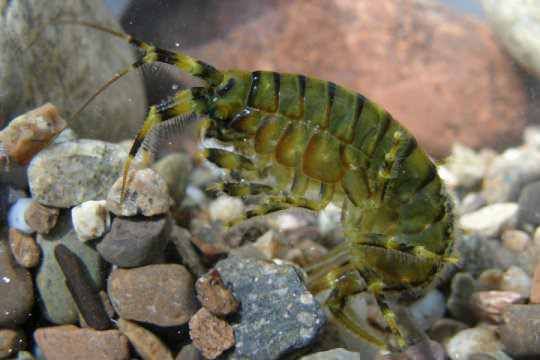Research at Lake Baikal for the Protection of a Unique Ecosystem
Published on by Water Network Research, Official research team of The Water Network in Academic
Researchers are investigating how climate change and environmental toxins are impacting the world's largest and oldest freshwater lake.

Lake Baikal formed between 25 and 30 million years ago and contains around 20 per cent of all unfrozen fresh water on Earth. At approximately 23,000 cubic kilometres, its water volume is even larger than that of the Baltic Sea.
Over the course of evolutionary history, particular conditions in Lake Baikal have resulted in a unique fauna. About 80 per cent of the 2,600 or so species living in Lake Baikal are endemic -- in other words they are not found anywhere else on Earth, indicating that they have adapted very well to the extreme conditions.
However, whether the fauna of Lake Baikal will remain so diverse and unique in years to come is uncertain. The lake is situated in a region in which global warming is particularly noticeable. Over the past 50 years, the average surface temperature of Lake Baikal has increased by nearly 1.5 °C. "And it's still rising," says Luckenbach.
Two native amphipods of the genus Eulimnogammarus are being used as model organisms. Amphipods perform an important ecological function in water: they break down organic material, thus keeping the water clean, and serve as food for fish. This key role in the food network makes them important model organisms for ecotoxicologists.
Studies on the temperature sensitivity of Baikal amphipods carried out at the University of Irkutsk show that one species (E. cyaneus) can tolerate water temperatures up to around 20 °C, which may occur in summer close to the shores of the lake. The research team found that E. cyaneus produces a constant level of so-called heat shock proteins, which protect important protein molecules in the organism that would otherwise be damaged at high temperatures.
The other species, E. verrucosus, produces far fewer heat shock proteins and instead migrates to deeper, cooler regions of the lake to escape high water temperatures. "If water temperatures increase as a result of climate change, this could have far-reaching consequences not only for the individual species, but also for the balance of the ecosystem, which has developed over a long period of time," says Luckenbach.
"In the case of E. cyaneus, the temperature maximum which the species can tolerate for long periods can sometimes already be reached in summer -- a further temperature increase would be extremely critical. And if E. verrucosus has to migrate to deeper water more than is currently the case, the species will have to compete more with the amphipods living there for food sources."
In their study, published recently in Environmental Science and Technology, a team of researchers from UFZ, the AWI and the University of Irkutsk investigated how these two species of amphipods react to chemical pollution in the water.
The animals were exposed to the heavy metal cadmium, which served as a model toxin. Although the water in Lake Baikal is still largely unpolluted, cadmium is a relatively frequent environmental pollutant whose toxicity makes it extremely problematic to ecosystems. It seems likely that Lake Baikal could see increasing heavy metal pollution. The lake's largest tributary, the Selenga River, is increasingly polluted with mining waste water from Mongolia, and via air, pollutants reach the lake from the industrial region around Irkutsk.
The reactions of the amphipods were observed in the laboratory. "The smaller species E. cyaneus absorbed the pollutant faster and thus died at lower pollutant concentrations in the water," explains Dr Lena Jakob, an ecophysiologist at the AWI, who carried out the experiments at Lake Baikal.
"We also observed that E. verrucosusslowed down its metabolism even at low concentrations of cadmium. This is a warning sign, because the animals might avoid feeding when this happens, do not reproduce and are more likely to fall prey to predators due to reduced activity. Even a low but constant level of chemical pollution in Lake Baikal could have massive impacts on individual species and the ecosystem as a whole."
Read more: Science Daily
Media
Taxonomy
- Water Pollution
- Pollution
- Climate Change
- Lake Management
- Climate Protection
- Animal Health